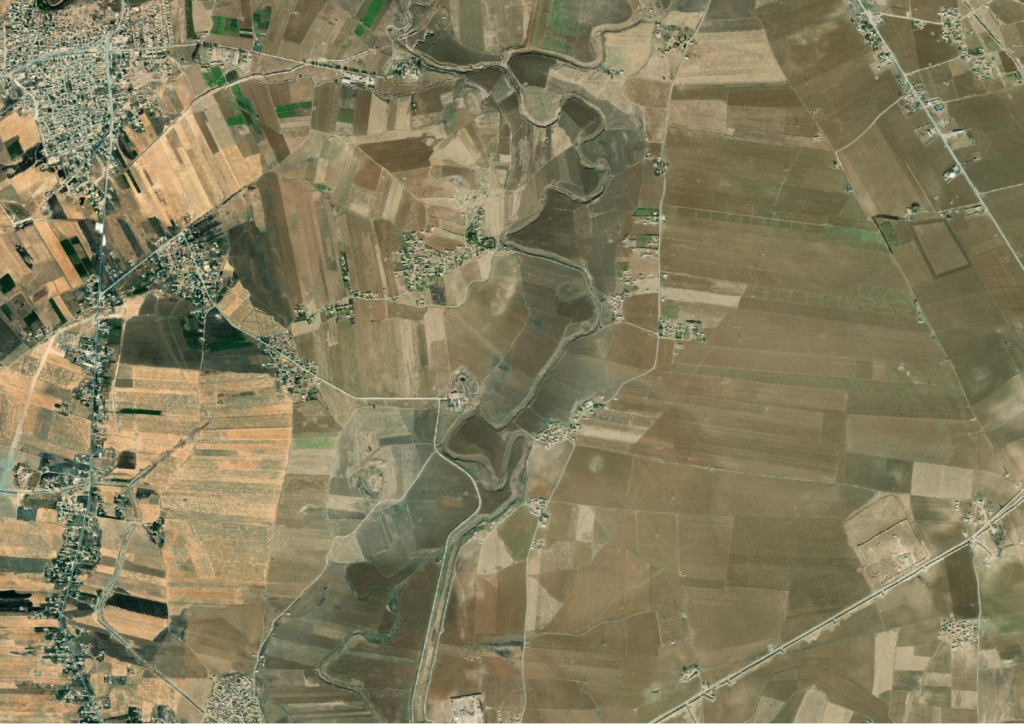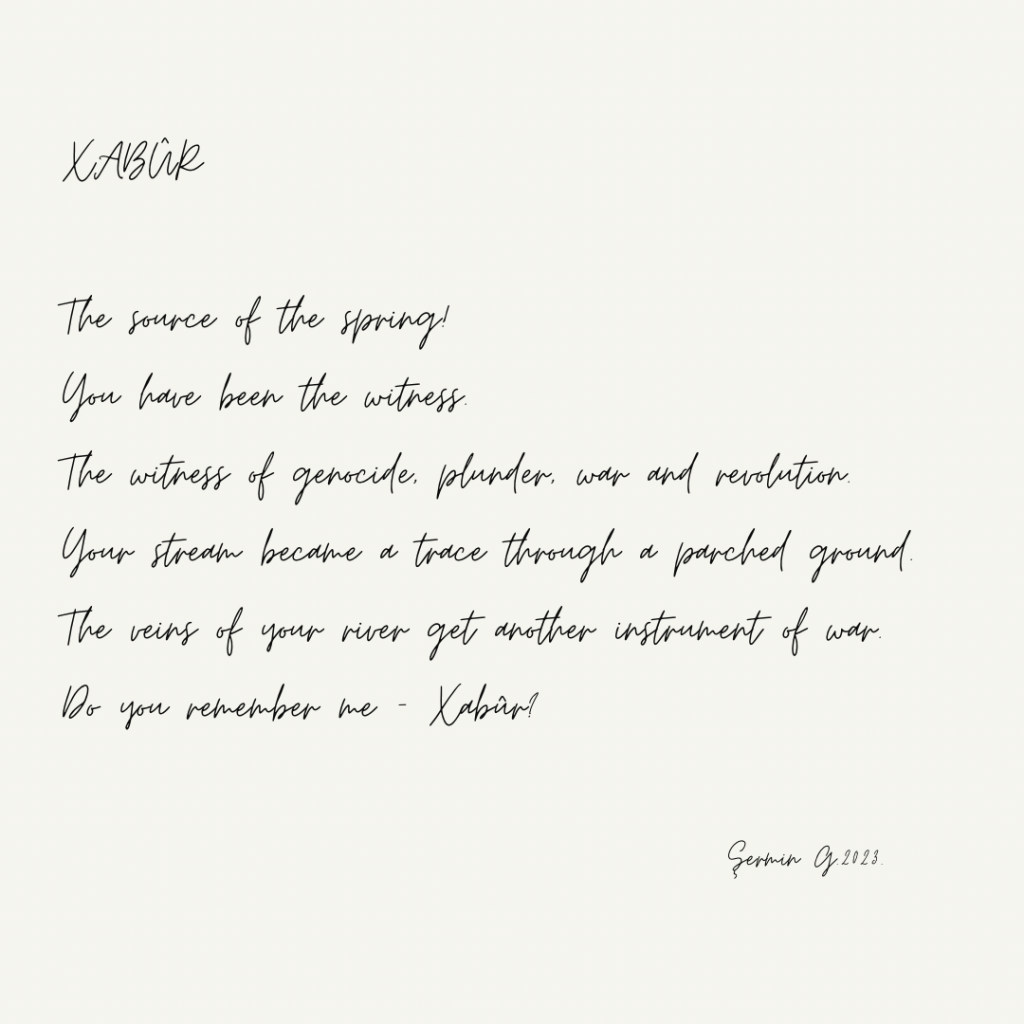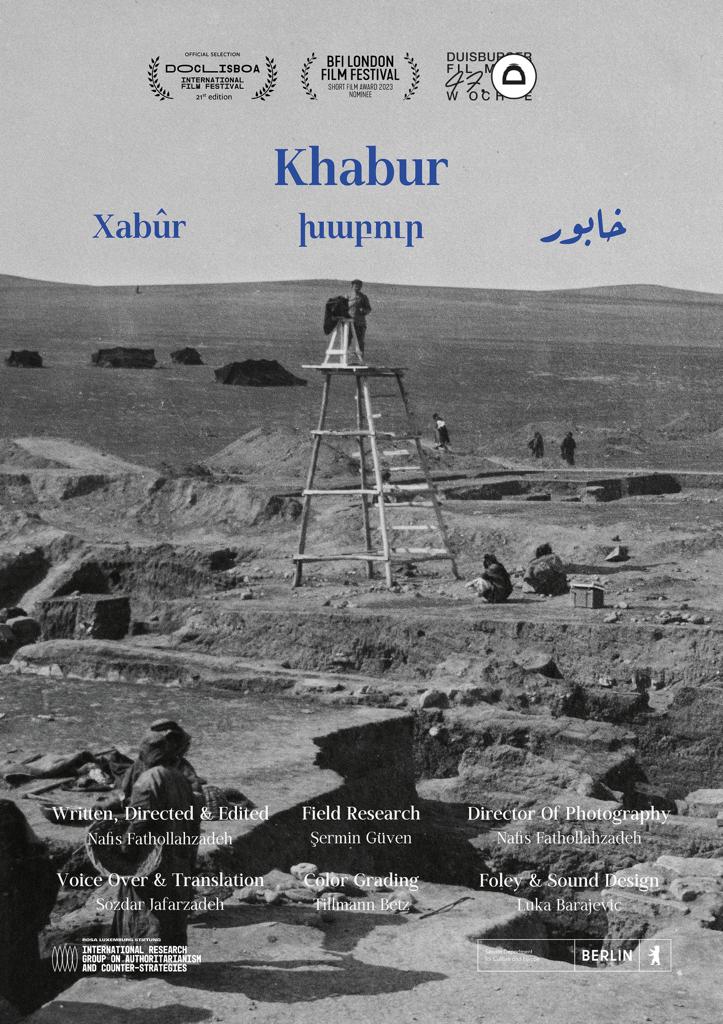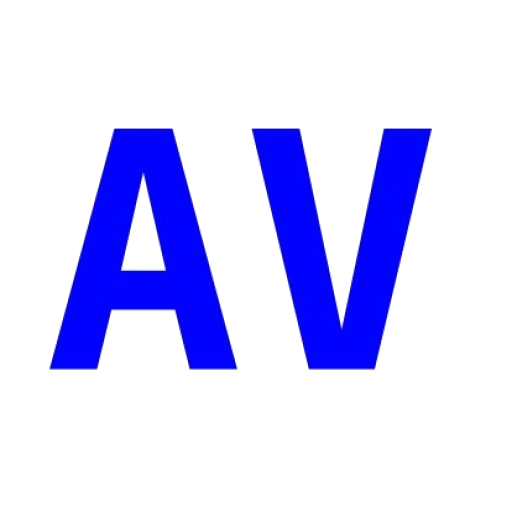Xabûr is the longest tributary of the Euphrates, a transboundary river crossing the border between Turkey and Northeastern Syria.
Climate crisis, prolonged drought periods, the ongoing war, embargo, water policies, and dam building are among the reasons contributing to the drying up of the Khabur River and the water crisis in the region.
kurdî: Xabûr şaxa herî dirêj a çemê Firatê ye, çemê dersînor yê ku di sînorê navbera Tirkiye û Bakurê Rojhilatê Sûriyê de derbas dibe.
Krîza jîngehê, dewreyên dirêj yên hişkesaliyê, şerê berdewam, ambargo, polîtîkayên avê û çêkirina bendavan ji aliyê dewleta Tirk ve, bi tenê hinek sedemên ziwabûna çemê Xabûr û krîza avê ya li herêmê ne.

data sourece: max mar_2023

Film Project with Nafis Fathollahzadeh Khabur – Xabûr 2023

Director: Nafis Fathollahzadeh | Production: Nafis Fathollahzadeh | Script writing: Nafis Fathollahzadeh | Field research: Şermin Güven | Director of photography: Nafis Fathollahzadeh | Foley and sound design: Luka Barajevic | Edit: Nafis Fathollahzadeh | Color grading: Tillmann Betz | Archival research: Nafis Fathollahzadeh | Kurdish translation: Sozdar Jafarzadeh
Khabur [2023] [kurdish text version below]
The film departs from Tell Halaf (an archaeological site in the valley of the Khabur River) and follows the journey of Tell Halaf’s archeological collection towards Berlin where it has resided since 1930. It traces the circulation of violence in different times and contexts along the Khabur River and engages with the economic and political power relations that have been transforming the landscape of the Khabur valley, displacing beings and their belongings.
A magnifying glass observes the archival photographs of the excavation and deconstructs what has been framed. The excavated statues become the protagonists of the film narrating the story. The film addresses photography and archeology as two disciplines emerging from the colonial-imperial enterprise, critically engaging with the imperial grammar of institutionalised archives, and examining the way it could be recycled, reimagined, and rehearsed.
Xabûr [kurdî]
Fîlm ji Til Halaf (ciyekî arkeolojîk ê li geliyê Çemê Xabûrî ye) dest pê dike û rêwîtiya xwe ya berhevkirina berhemên arkeolojîk a Tell Halafê ber bi Berlînê ve berdewam dike. Ew berhem ji sala 1930î ve li wê derê ne. Ew bahsa dem û dewranên cuda yên şidetê dike ku li derdorê çemê Xabûrê rû dan. Û bala xwe dide têkiliyên hêza aborî û siyasî yên ku dîmenê geliyê Xabûrê diguherîne û xwecihîyên wê derê tevî malên wan ji cih û warên wan radike.
Hûrbîneke mezin li wêneyên arşîv ên kolandinê temaşe dike û tiştên çarçovekirî bi awayekî cuda rave dike. Peykerên ku hatine vedîtin, dibin lehengên fîlmî ku ew bixwe çîrokê vedibêjin. Ev fîlm behsa wênekêşî û arkeolojiyê dike ku ew bi xwe jî ji dîsîplînên karsaziya kolonyal-împeryal derketine. Ew bi şêwazeke rexneyî bi ramana emperyal a arşîvên sazûmankirî re mijûl dibe, û şêwaza zivrandin û afirandineke nû û xeyalkirineke nû vedikole.
